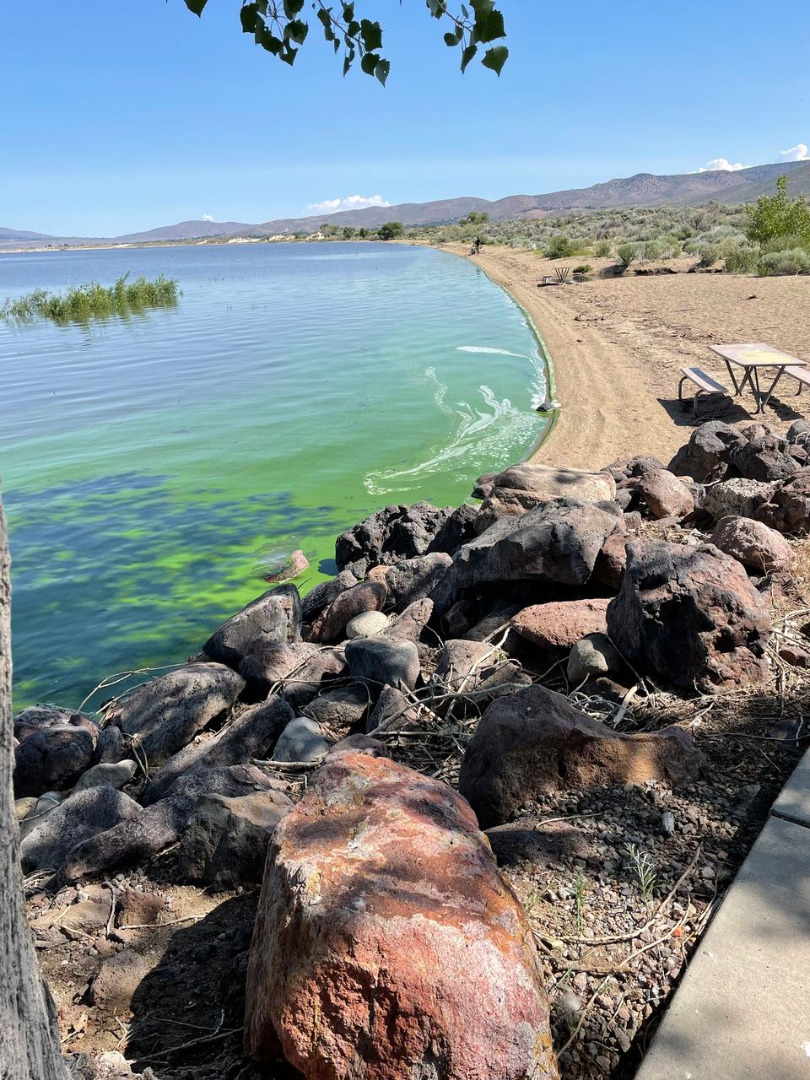Nevada Fish Report
Washoe Lake Fish Report for 6-29-2023
Washoe Lake Fish Report for 6-29-2023
Potential Harmful Algal Bloom identified in Washoe Lake
Washoe Lake - Washoe City, NV (Washoe County)

Photo Credit: Photos courtesy the Nevada Division of Environmental Protection
by Nevada State Parks
6-29-2023
Website
OR IMMEDIATE RELEASE
CONTACT: Jenny Jackson, j.jackson@parks.nv.gov
Potential Harmful Algal Bloom identified in Washoe Lake
Park visitors and their pets should avoid contact with the water due to potential adverse health effects
Washoe Lake, NV – Scientists sampling surface waters at Washoe Lake State Park have identified a potential Harmful Algal Bloom (HAB) along the shoreline of the lake. The Interagency HAB Task Force – comprised of officials from the Nevada Department of Health and Human Services, the Nevada Division of Environmental Protection, Nevada State Parks, and the Nevada Department of Wildlife – are working together to ensure the public is notified to help protect the health of park visitors and their pets.
Exposure to toxic algae can occur by touching, swallowing, or inhaling affected water, and can lead to mild or potentially serious health issues. Children and pets are especially at risk. Visitors and their pets are urged to avoid swimming in the lake water until further notice. The lake will remain open for motorized boating as well as paddling.
Algal blooms can last for days or weeks and toxins can last for days after the bloom. They can occur at any time of the year but are most common in the summer – when the water is warm and stagnant. A HAB may be present if:
• The water smells rotten
• Large mats or scums are floating on the surface
• The water looks like green paint
• There are bright colors like blue, green, white, brown, or red
To protect yourself from toxic algae, avoid recreating (wading, swimming, jet-skiing, or water skiing) in water containing possible algal blooms. Keep children and pets away from the water. Do not drink, cook, or wash dishes with the affected water. If you come in contact with the water or the algal scum, wash the area thoroughly with clean water from a safe source. Fish can collect algal toxins in their bodies, but fish in Nevada likely have lower levels because blooms are irregular. If you decide to eat a fish you catch during a bloom, wash it carefully with clean water and only eat the fillets. Throw skin and internal organs in the trash, which may have higher levels of algal toxins.
Individuals who believe they may be experiencing symptoms of exposure to algal toxins should contact their local health-care provider or contact the Poison Control Center: 1-800-222-1222. To learn more about HABs, visit the Center for Disease Control and Prevention website at www.cdc.gov/habs/. To report a suspected HAB in Nevada call (888) 331-6337.

www.NevadaFishReports.com © 2025. All Rights Reserved.
Website Hosting and Design provided by TECK.net
Website Hosting and Design provided by TECK.net